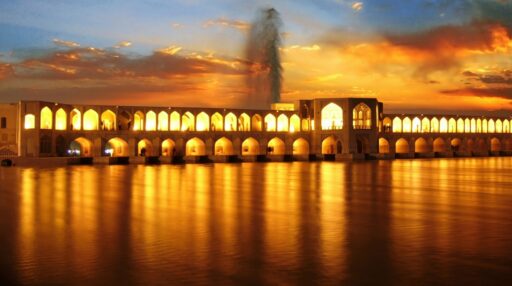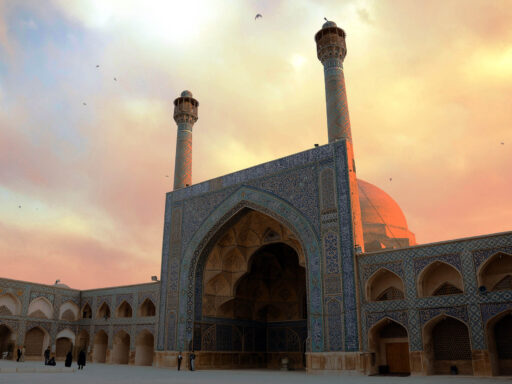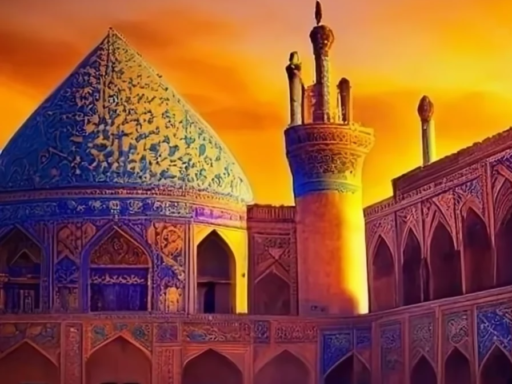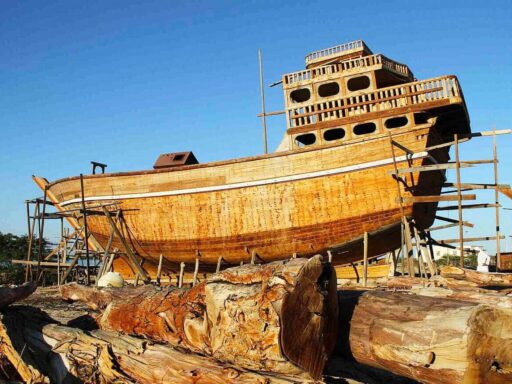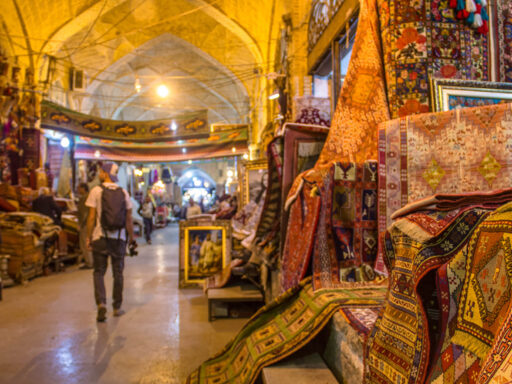Introducing The Khaju Bridge
Spanning the serene waters of the Zayandeh River in the heart of Isfahan, Iran, the Khaju Bridge stands as an architectural masterpiece that has captivated visitors for centuries. This iconic structure, a testament to the ingenuity and artistry of Persian design and engineering, is more than just a bridge – it is a living embodiment of Isfahan’s golden age, a symbol of cultural resilience, and a reminder of the enduring power of art and architecture to inspire awe and wonder.
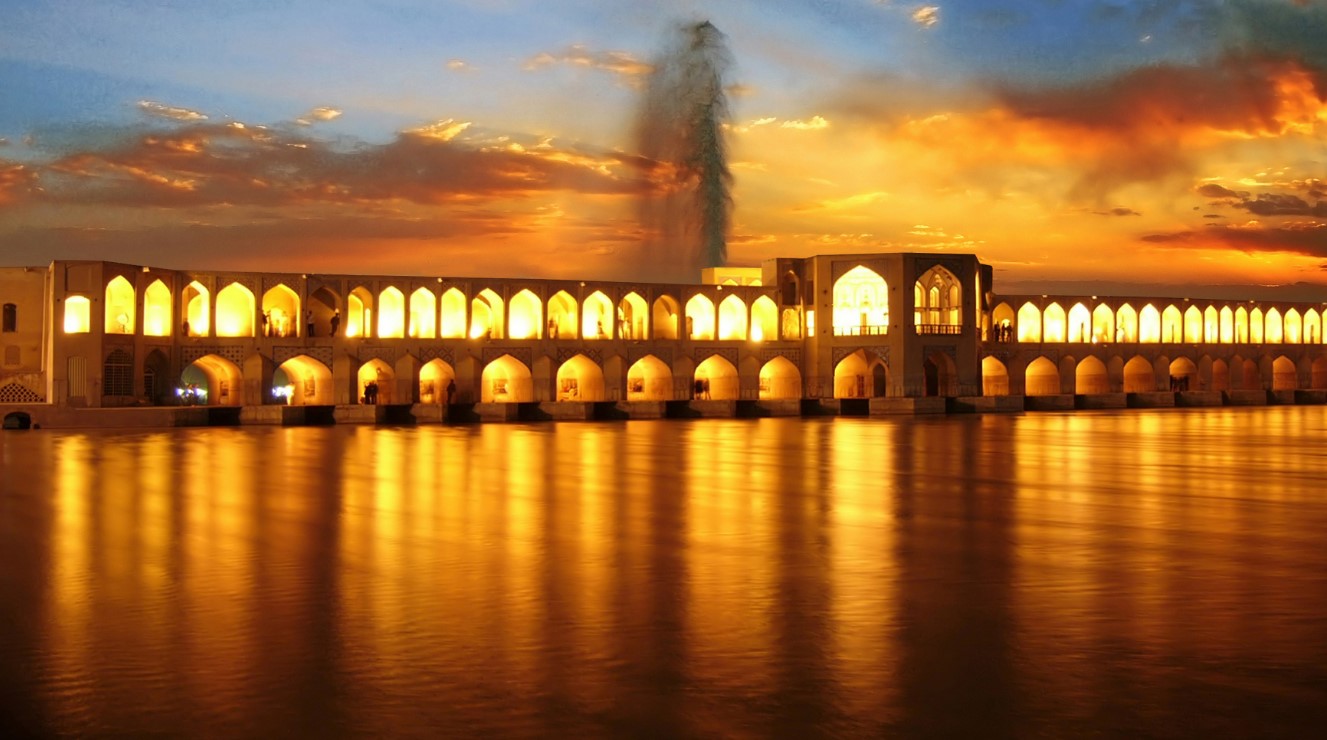
A Bridge Steeped in History and Cultural Significance
A Vital Lifeline for Ancient Isfahan
The Khaju Bridge’s origins date back to the 17th century, during the reign of the Safavid dynasty, when Isfahan was a thriving center of trade, culture, and artistic expression. At that time, the bridge served as a vital lifeline for the city, facilitating the movement of people, goods, and resources across the Zayandeh River. Its strategic location made it an essential link in the bustling trade routes that crisscrossed the region, connecting Isfahan to distant lands and cultures.
A Reflection of Isfahan’s Golden Age
The construction of the Khaju Bridge coincided with Isfahan’s golden age, a period when the city flourished as a cultural and artistic center under the patronage of the Safavid rulers. During this time, Isfahan underwent a remarkable transformation, adorned with magnificent architectural wonders, lush gardens, and vibrant public spaces, earning it the moniker “Half the World.” The bridge itself was a testament to this era of artistic and intellectual enlightenment, showcasing the advanced skills and knowledge of Persian architects, engineers, and artisans.
A Symbol of Persian Engineering Prowess
The Khaju Bridge is a remarkable feat of engineering, showcasing the mastery of Persian builders and their ability to create structurally sound and aesthetically pleasing structures. The bridge’s graceful arches, sturdy foundations, and innovative design elements not only ensured its longevity but also elevated it to the status of a masterpiece, showcasing the ingenuity and creativity of Persian engineering.
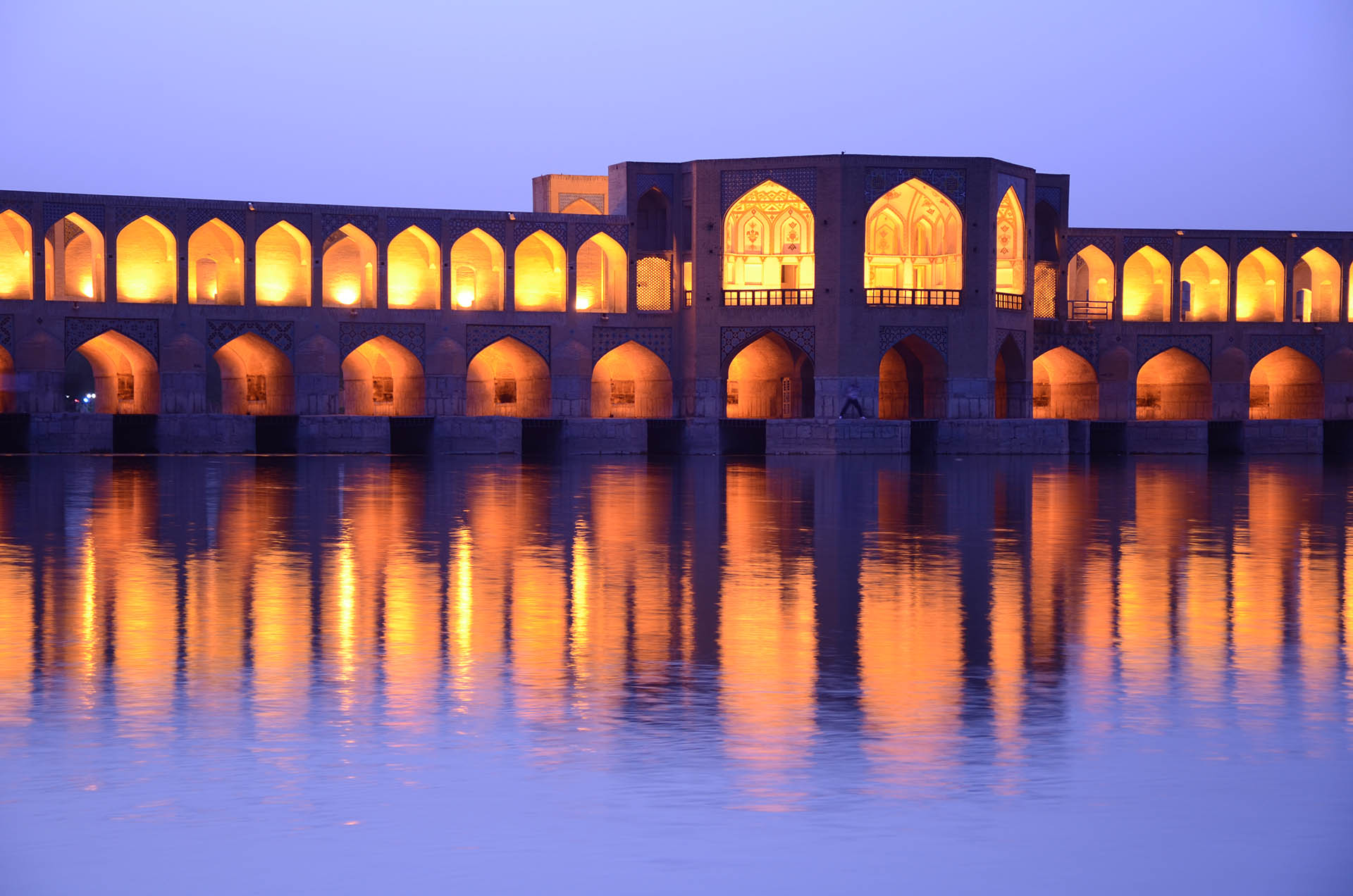
Architectural Marvels and Artistic Splendor
The Graceful Arches and Vaulted Spans
One of the most striking features of the Khaju Bridge is its series of graceful arches and vaulted spans, which create a rhythmic and harmonious visual pattern. Each arch is a masterpiece of engineering, meticulously crafted with precision and care to ensure structural integrity while enhancing the bridge’s aesthetic appeal. The arches’ graceful curves and geometric forms reflect the principles of Islamic art and architecture, embodying the harmonious balance between form and function.
The Intricate Tilework and Decorative Elements
The Khaju Bridge is adorned with intricate tilework and decorative elements that reflect the rich artistic traditions of Persian culture. Vibrant patterns, floral motifs, and calligraphic inscriptions adorn the bridge’s surfaces, creating a mesmerizing tapestry of color and design. These decorative elements not only enhance the bridge’s beauty but also serve as a testament to the skilled artisans who brought them to life, using ancient techniques passed down through generations.
The Pavilions: Architectural Gems and Gathering Spaces
One of the most remarkable features of the Khaju Bridge are the two exquisite pavilions that grace its extremities. These pavilions, adorned with intricate tilework, carved wooden ceilings, and delicate latticework, served as gathering spaces for the elite and as venues for cultural events and celebrations. The harmonious blend of architectural elements, such as the muqarnas (honeycomb vaulting) and the use of light and shadow, create an atmosphere of tranquility and beauty, inviting visitors to linger and appreciate the artistry that surrounds them.
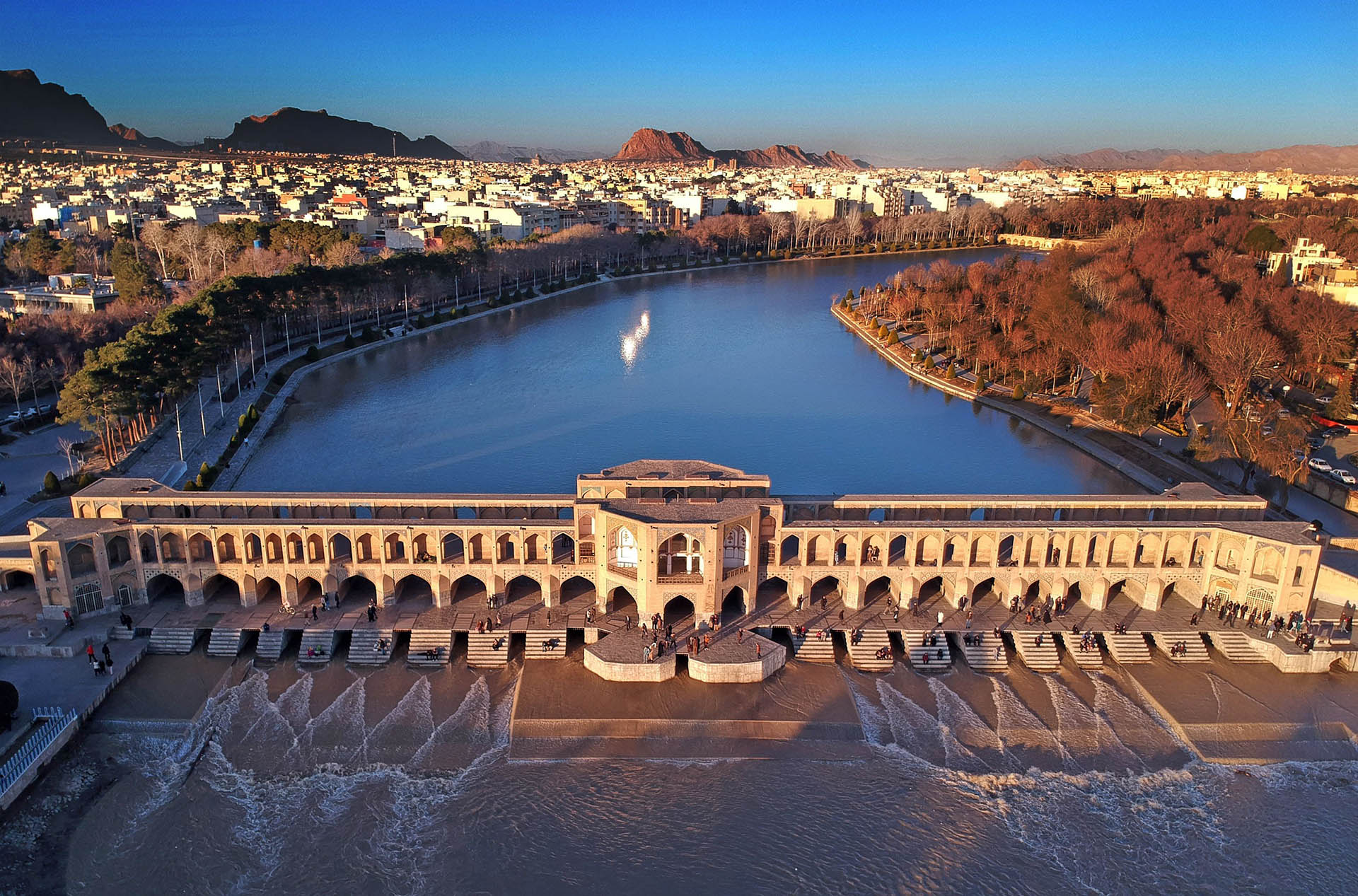
A Destination for Leisure, Celebration, and Cultural Enrichment
A Gathering Place for Locals and Visitors
Throughout its history, the Khaju Bridge has served as a gathering place for locals and visitors alike. During the evenings, the bridge comes alive with the sounds of music, laughter, and celebration, as families and friends gather to enjoy the cool breeze and picturesque surroundings. Traditional Iranian music and dance performances often take place on the bridge, adding to the vibrant cultural atmosphere and creating a unique sense of community and belonging.
A Venue for Festivals and Celebrations
The Khaju Bridge has played a significant role in the cultural and social life of Isfahan, serving as a venue for various festivals and celebrations. During the annual Nowruz (Persian New Year) celebrations, the bridge is adorned with colorful decorations, and traditional performances take place, attracting visitors from near and far. These festivities not only showcase the rich cultural heritage of Iran but also foster a sense of unity and pride among the local community.
A Living Museum and Cultural Immersion
Beyond its architectural and artistic merits, the Khaju Bridge serves as a living museum and a gateway to understanding the rich cultural heritage of Isfahan and Iran. Visitors can immerse themselves in the history and traditions of this ancient city by strolling along the bridge, appreciating the intricate details, and learning about the stories and legends that have been woven into its fabric over the centuries. This cultural immersion experience offers a unique opportunity to connect with the past and gain a deeper appreciation for the enduring legacy of Persian civilization.
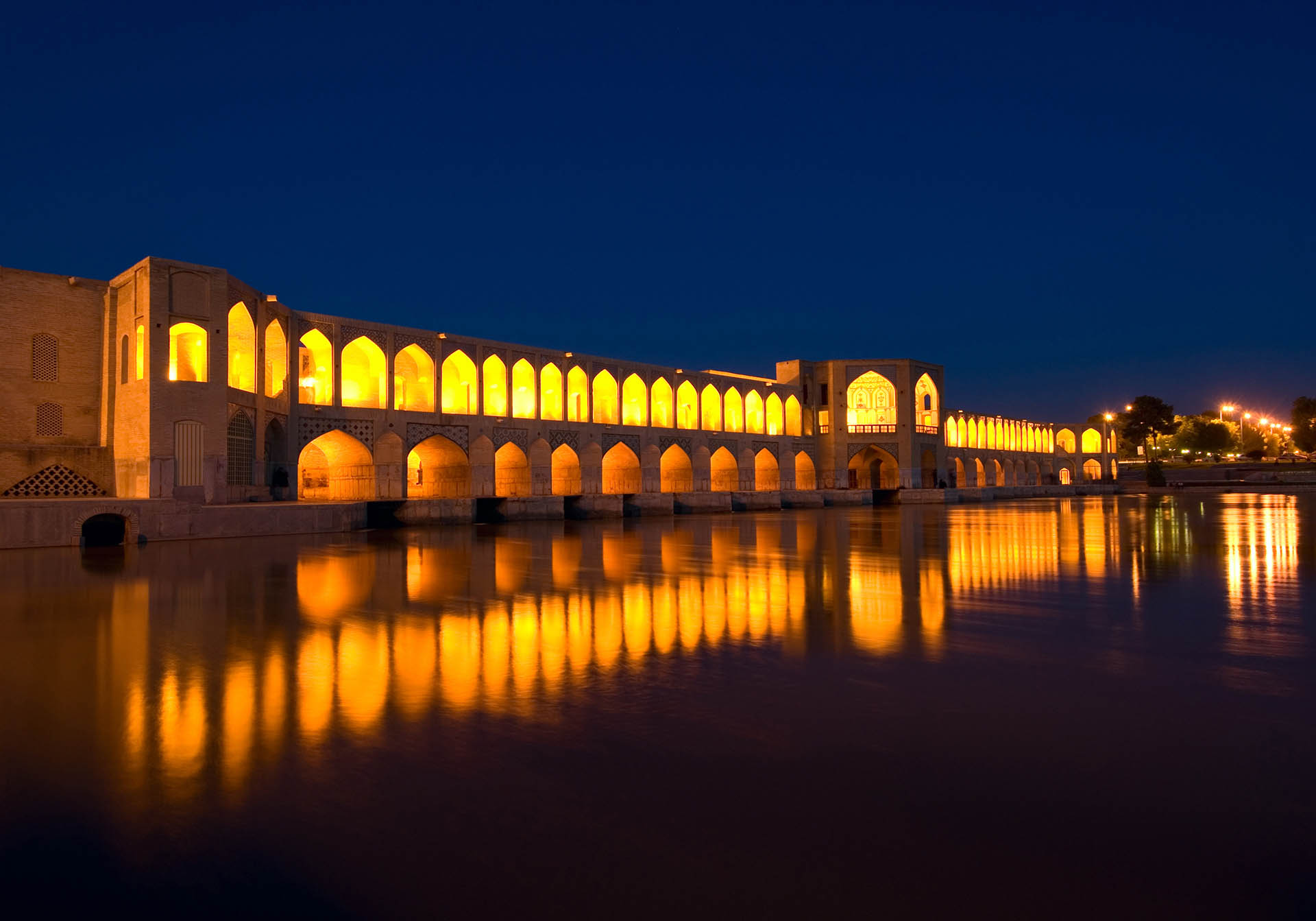
Preserving a Timeless Legacy
Challenges and Threats to the Khaju Bridge
Like many historic structures, the Khaju Bridge faces various challenges and threats that jeopardize its preservation. Environmental factors, such as pollution, erosion, and natural disasters, as well as the impact of urbanization and heavy traffic, have taken a toll on the bridge’s structural integrity and aesthetic appeal. Additionally, the increasing demands of modern life and infrastructure development pose ongoing risks to this architectural marvel.
Collaborative Conservation Initiatives
To safeguard this iconic landmark, collaborative conservation initiatives have been undertaken by local authorities, cultural organizations, and international bodies. These efforts involve meticulous restoration work, structural reinforcement, and the implementation of sustainable preservation strategies to ensure the bridge’s longevity for future generations. Experts in engineering, architecture, and art conservation collaborate to develop innovative techniques and materials that respect the bridge’s historical integrity while addressing contemporary challenges.
Raising Awareness and Promoting Cultural Heritage
Alongside physical conservation efforts, initiatives are underway to raise awareness about the Khaju Bridge’s cultural and historical significance. Educational programs, guided tours, and multimedia exhibitions aim to foster a deeper appreciation for this iconic landmark among local communities and international visitors. By engaging the public and fostering a sense of ownership and pride, these initiatives play a vital role in ensuring that the bridge’s legacy is preserved and celebrated for years to come.
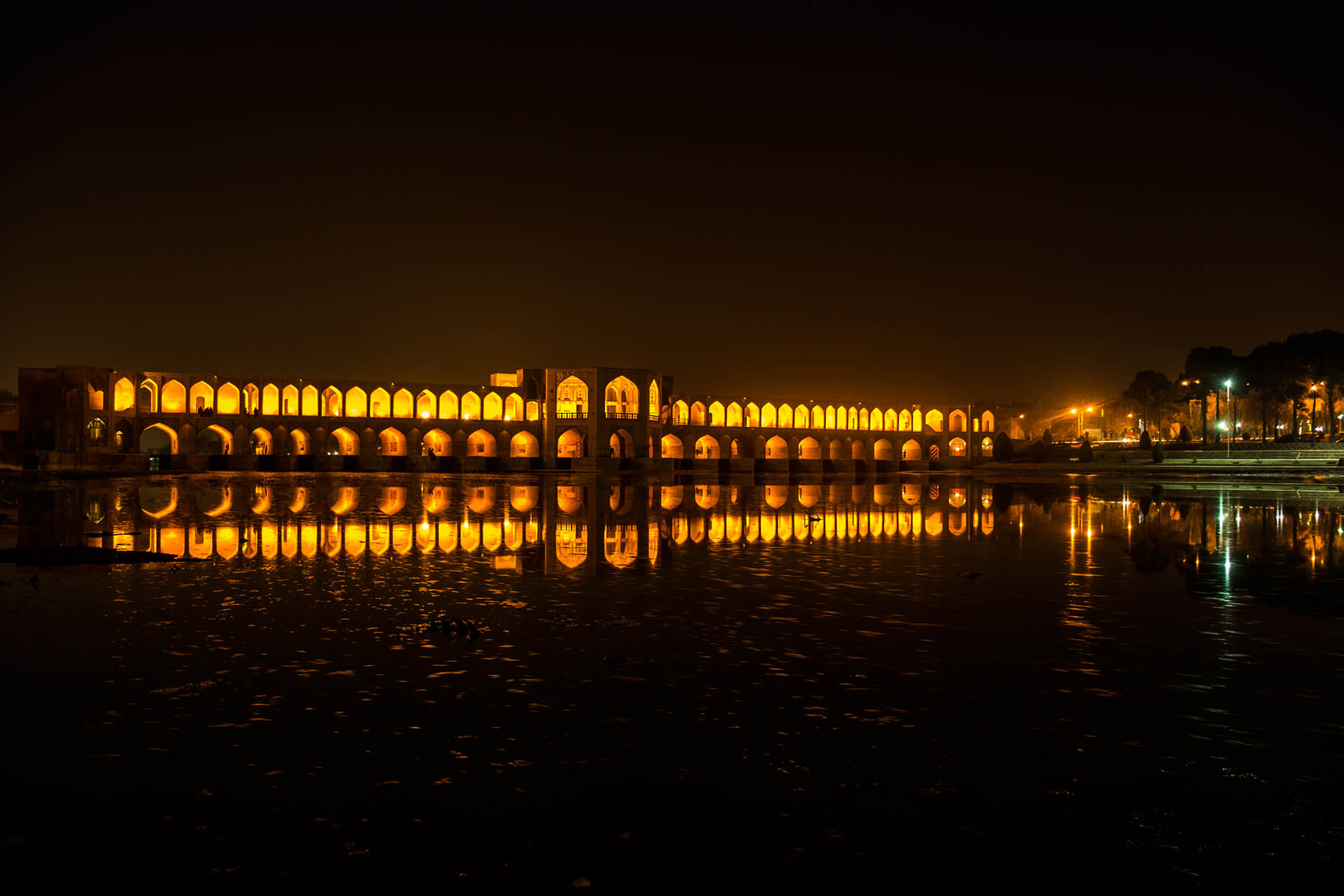
Conclusion
The Khaju Bridge is a true masterpiece of Persian architecture, a living testament to the ingenuity, creativity, and cultural richness of the Safavid era. Its graceful arches, intricate tilework, and exquisite pavilions have captivated the imagination of visitors for centuries, offering a glimpse into the artistic and engineering achievements of ancient Isfahan. More than just a bridge, it serves as a symbol of resilience, a reminder of the enduring power of art and architecture to transcend time and inspire awe and wonder.
As we continue to appreciate and preserve this architectural marvel, the Khaju Bridge will remain an enduring icon, connecting generations and cultures for centuries to come. Its legacy serves as a reminder of the importance of preserving our shared cultural heritage, ensuring that the stories and achievements of past civilizations continue to inspire and enlighten us in the present and future. Through the Khaju Bridge, the spirit of Isfahan’s golden age lives on, inviting us to appreciate the timeless beauty and profound cultural legacy that have made this bridge an enduring source of wonder and pride.

